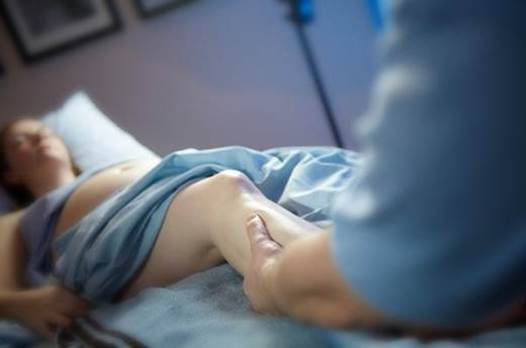Nobody likes talking about varicose
veins, even to your doctor. Knowing what to do about them can bring welcome
relief
Your baby at 7 months
Track your baby’s progress
Progress: A
baby born at this stage would still need help with breathing, but the lungs
have matured to an extent that survival outside the womb is possible. Your
baby’s external appearance is fully formed, but many of her organs are
continuing to mature. She’s establishing a sleep-wake cycle, so many of her
movements are happening while she’s asleep.
Size: She is
now as long as 40cm, but is tightly tucked up in a ball that measures 30cm –
the size of a small watermelon.
Development:
The expanding brain begins to wrinkle to fit into the skull. The baby reacts to
loud noises. Baby’s wrinkly skin is smoothing as she gains more fat.

Your
baby’s external appearance is fully formed, but many of her organs are
continuing to mature.
Picture your favorite jersey – one that’s
been over-washed and is out of shape. That’s what a varicose vein looks like:
overstretched and shapeless. These veins are bigger than they should be and
still have to fit into their same spot. That’s why they look blue, swollen and
wriggly under the skin.
Hormones can’t be blamed for this problem –
it’s mostly genetics, increased blood flow and pressure. Varicose veins can pop
up in three places: the legs, the rectum (hemorrhoids) and the vulva.
Veins take blood back to the heart. Their
walls are thinner with less muscular tissue than arteries. They also have tiny
valves that keep the blood flowing in one direction, despite gravity. If these
valves don’t work properly, the pressure inside the veins increases, causing
blood pooling or overfill, stretching the vein so that in time it becomes
swollen.

If
these valves don’t work properly, the pressure inside the veins increases,
causing blood pooling or overfill, stretching the vein so that in time it
becomes swollen.
Pelvic congestion in late pregnancy increases
pressure on veins in this area – namely the anus and the vulva – which can lead
to uncomfortable and painful hemorrhoids’ or vulvar varicose veins. Hemorrhoids
are varicose veins around the anus that many pregnant women don’t realize they
have until after the birth. These are painful, itchy and can bleed when you are
constipated. Hemorrhoids can feel like small peas or bunches of grapes,
depending on how big they are.
Dealing with varicose veins and hemorrhoids:
Varicose veins:
·
Start walking every day early in your pregnancy,
and keep it up for as long as you can.
·
Wear flat shoes and don’t cross your legs when
you sit.
·
Massage your legs.
·
Try not to stand for too long.
·
Spend some time during the day with your feet up
higher than your body.
·
Reduce salt and empty calories.
·
Wear loose clothing – avoid tight jeans.
·
If you need to wear elasticated stockings, roll
them on from your feet upwards when lying on your back with your legs in the
air.

Massage
your legs.
Hemorrhoids:
·
Drink lots of water and eat fresh fruit and
vegetables to avoid constipation. Soften hard stools with stool softener if
recommended by your doctor.
·
Keep the area clean – sit in a bowl of warm
water after using the toilet.
·
Ask your pharmacist for a cream to relieve pain
and itching.
·
Use cream recommended by your healthcare
provider to clean and lubricate the hemorrhoids before gently pushing them in.
·
A ‘ring cushion’ can be useful.
·
Use baby wipes instead of toilet paper.

Ask
your pharmacist for a cream to relieve pain and itching